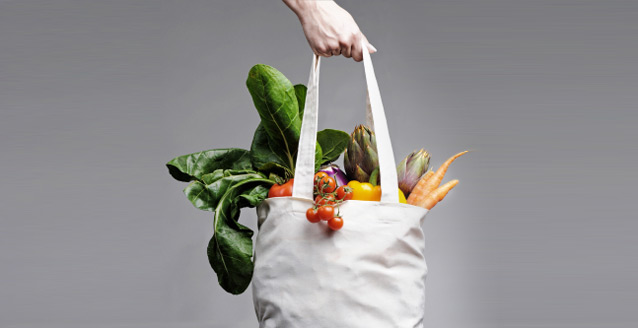Advanced analytics helps to track, understand and leverage every stage in the shopping path on grocery channels
A regular shopper at Sainsbury receives coupons on her favorite products and most purchased items – from spaghetti sauce to cheddar cheese – at the checkout. These personalized coupons, offered while swiping her Nectar loyalty card at the checkout, is part of Sainsbury’s strategy to engage better with its best customers and reward them for their loyalty. And to keep them coming back for more.
‘Coupon at Till’, the innovative scheme, may appear simple enough on the surface but involves data integration, data mining of volumes of Sainsbury’s customer data and advanced analytics at the backend to match the right offers with the right customers – all in real time.
Advanced Analytics for Customer Insight – Recipe of Winning Grocers
With fluctuating commodity prices, razor thin margins, and an array of big-box, non-grocery players entering the fray with in-store food brands and customized grocery lines, food and grocery retail industry has become a tough business. As competition for the food dollar intensifies, advanced analytics is proving to be an essential tool in the grocery retailers’ strategy to sustain business and build competitive advantage.
More recently, advanced customer analytics tools are being implemented by a range of large to mid-sized grocery chains and supermarkets to understand and analyze shopper behavior effectively and to apply these insights towards ‘shopper marketing’ – where the focus is on influencing shoppers’ decisions at every stage in the grocery shopping path.
Here are three top analytics-driven strategies that grocers are adopting for business benefit:
Strategy number one – Customer-driven Offers and Promotions
The verdict is out on mass-mailed marketing campaigns: they are no longer working. The industry is recognizing that shoppers receiving frequent mailers from the same supermarkets are more likely to roll their shopping carts over to the competition.
Kroger’s Customer First strategy believes in tying customer information with smart coupon offers. Kroger customers get in their inbox, mailers which are of relevance and interest to them. The idea is to offer them ‘what they actually buy in the store, and not trying to sell things they have never bought.’
To action this, Kroger applies advanced analytics tools to volumes of customer data and tailors offers to customers based on their actual shopping behavior and history. Today regular customers at Kroger redeem nearly half the coupons the retailer sends out, which is far higher than the average trend of 1 % to 3 % redemption.
Leading retailer Target applied advanced customer analytics to perfect a “pregnancy prediction” model. By correlating customers’ shopping patterns with their market basket, the retailer was able to successfully identify customers that who were pregnant. Acting on this data, the company offered coupons and promotions targeted at customers at various stages of their pregnancy. Between 2002 and 2010, Target’s sales in the Mother and Baby product categories went up and revenues grew from $44 billion to $67 billion.
Strategy number two – Improving Aisle Layouts and Planograms with Market Basket Analysis
Market Basket Analysis, an advanced analytical tool, helps grocers to discover hidden affinities between products and identify the ‘occasion’ that drives a shopping trip.
Did a shopper come in to pick a few items that he ran out of (convenience shopping) or is he stocking up for the month (replenishment shopping)? Is he throwing a party, going on a trip or cooking an exotic meal?
These insights are being used by grocers towards designing better customer experiences that meet the specific needs of various such shopper occasions. For instance, ‘get in and out’ zones at the front of the supermarket, express, and self-service check-out and ‘drive through’ facilities enable quick pick-up and billing of specific items by convenience shoppers. On the other hand, many supermarkets are stocking additional product lines – stationary, CDs and pharmacy – so that they can avoid replenishment shoppers from ‘splitting’ their baskets across other stores and become the kind of one-stop destination that these shoppers are on the lookout for.
Strategy three – Shelf Life Management and Replenishment Planning
With in-house departments for dairy, meat, fresh produce, seafood, bakery and deli, no other retail segment is in need of hourly inventory planning as much as food and grocery.
A closer understanding of shopper behavior and demand patterns through the use of advanced customer analytics and forecasting tools helps UK Grocers, Waitrose, maintain optimized stocks, achieve faster turn-rates and reduce wastage on their perishables.
Analytics tools help grocery retailers monitor and analyze demand signals in these products including activity cycles through the day, peak hours for sales and store traffic, local events, seasonality, holidays, social trends and local buying habits. The latest retail analytics solutions drill down into region-wise as well as store and SKU-level details for all this data and offer grocers actionable decision-support to leverage this data.
Grocery Analytics Solutions: Getting to Know your Shopper Better
In a rapidly changing grocery retail industry landscape, advanced analytics for grocers offer unique value, being built on a retail data model with a deep understanding of the nuances and processes of the food and grocery retail industry business.
The actionable analytical capabilities in these solutions help every level in grocery operation from store associates to the CEO understand which products are most price-elastic, how customers react to combo-offers and whether their promotions performed to plan. From increasing shopper spend per visit to creating spot-on cross-selling campaigns, actionable intelligence can empower leading grocery retailers to build competitive advantage and grow their market share.



























